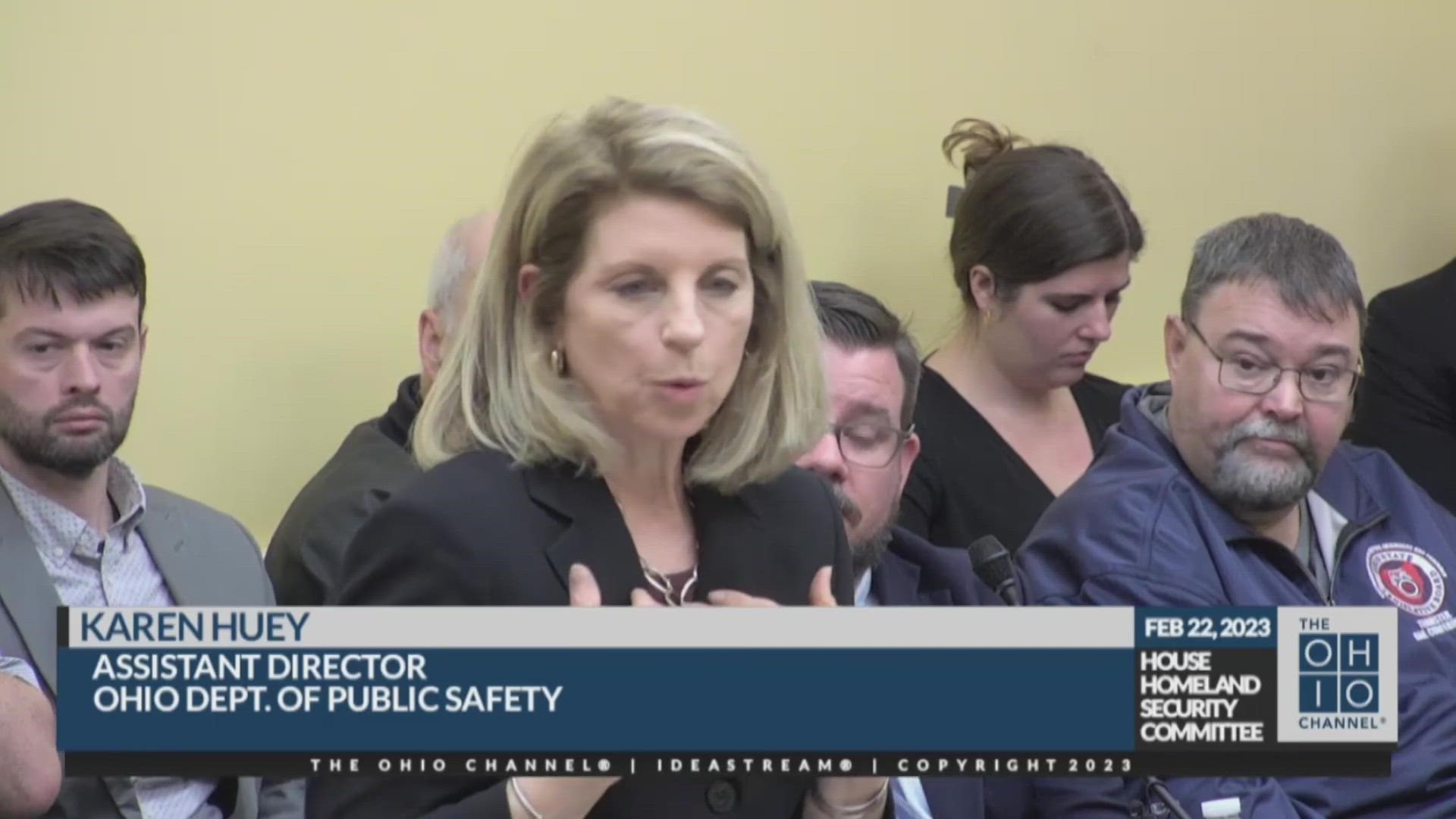COLUMBUS, Ohio — What can be done on the state level to prevent another derailment in Ohio? That question was at the center of a Homeland Security Committee hearing at the Ohio Statehouse.
There's really not a lot the state can do. Tightening safety regulations, and enforcement of those regulations has to be addressed on a federal level.
That was the message Wednesday from a leader of one of the state's largest rail labor unions.
"There are a lot of limitations with pre-emption at the federal level,” said John Esterly, the chairman of the Ohio state legislative board with the Brotherhood of Locomotive Engineers, the union that represents many railroad employees.
He said regulation can happen on the state level, but there are limitations.
"There is the caveat that it cannot restrict rail business severely,” he said.
Esterly is pushing for tighter safety regulations in a transportation budget request. He wants to see two-person crews maintained on freight trains and clearer guidance on wayside defect detectors, which detect issues with rail cars.
He said there needs to be direction on what happens when they alert the crew to a problem.
“Unfortunately in the absence of regulation, there's no cause for the railroad to comply with any information that these defect detectors provide. So even if a defect is detected there's no regulation that says you must stop and inspect that car,” he said.
Esterly was then asked by Rep. Juanita Brent if the state could create regulation for those detectors. To that, Esterly nodded, “yes.”
The Ohio Department of Safety also announced that it is taking a closer look at the guidelines for reporting what's being transported -- and how often.
"There are 15 active railroads in Ohio. There are seven that report to us on high hazard,” said Karen Huey, the assistant director of the department.
She said even though the train that derailed in East Palestine was not considered high hazard, there's a need to have better knowledge of exactly what’s passing through Ohio communities.
"There is an ability for a local EMA manager to understand or director to understand generally what travels through it's just when the crash occurs or something occurs it's not so easy for them to determine what was on that train,” Huey said.
Those train safety requests are part of Substitute House Bill 23, which had a second reading Wednesday.

